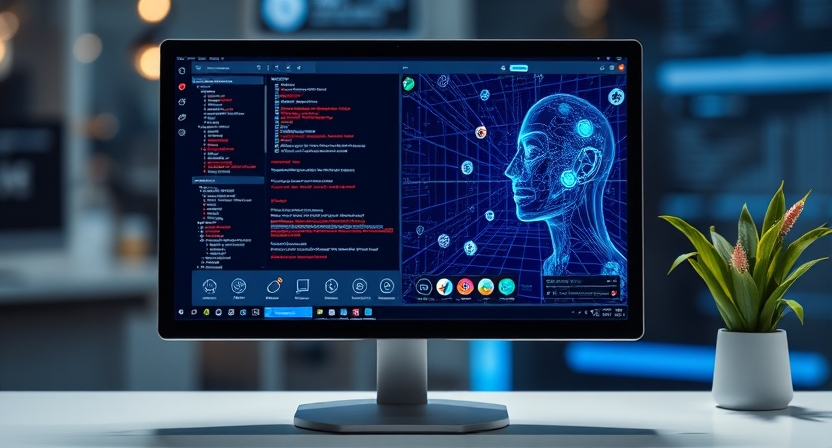Introduction to PermissionsAI
The advent of the internet has transformed our daily lives, yet it has not come without its challenges. Among these challenges, the proliferation of web pop-ups has emerged as a significant source of frustration for users. Pop-ups often disrupt browsing experiences, presenting unsolicited advertisements, distractions, and permission requests that can lead to increased anxiety and decreased engagement with web content. Users frequently find themselves inundated with numerous requests to allow notifications, access location, or other permissions, detracting from their overall online experience.
In response to these mounting frustrations, Google has introduced a new feature known as PermissionsAI. This innovative tool is designed to minimize the number of pop-up requests encountered by users while enhancing their browsing experience. By leveraging artificial intelligence, PermissionsAI seeks to streamline interactions by intelligently predicting how users are likely to respond to permissions prompts. This anticipatory approach allows for a smoother and more intuitive online experience, ultimately reducing the load of annoying interruptions.
PermissionsAI operates by analyzing user behaviors and preferences over time. By doing so, it can learn to automatically manage certain types of requests, thus minimizing the need for users to repeatedly answer permission prompts. This means that, instead of confronting a barrage of requests, users can navigate the web with greater ease and focus more on the content they wish to engage with. The introduction of PermissionsAI points to a significant shift in how web interactions are facilitated, concentrating on user satisfaction and streamlined usability.
As we explore PermissionsAI further, it becomes essential to comprehend its underlying mechanisms and the implications it holds for the future of web browsing. This tool not only addresses a prevalent concern among users but also sets the stage for further advancements in web technologies.
How PermissionsAI Works
PermissionsAI is an advanced tool integrated into Google Chrome that employs machine learning algorithms to enhance user interaction with permission requests. It functions by learning from individual user behavior, which allows it to predict and tailor responses to various permission prompts encountered while browsing the web. This is achieved through a continuous analysis of past user interactions, where the AI assesses how users have previously granted or denied permissions in similar contexts.
The fundamental principle behind PermissionsAI lies in its ability to leverage historical data. As users engage with websites—whether granting access to location data, notifications, camera usage, or microphone functionality—the AI records these choices and begins to identify patterns. Over time, the system becomes increasingly adept at recognizing the types of permissions a user is comfortable with and those they typically refuse. This proactive learning process brings a more personalized browsing experience and enhances user comfort.
In addition to its predictive capabilities, PermissionsAI synergistically interacts with other Google security features, notably the Safe Browsing tool. Safe Browsing continuously monitors websites for unsafe content, phishing schemes, and other potential threats, creating a safer internet experience. When PermissionsAI processes a request for permission, it can reference Safe Browsing’s data to flag any websites with a history of malicious behavior, thereby ensuring that users receive a contextual assessment of risks associated with granting particular permissions. This dual-functionality not only streamlines the browsing process but also aims to reinforce user safety online, ultimately leading to a more secure and pleasant web experience.
The Risks and Benefits of PermissionsAI
The introduction of PermissionsAI within Google Chrome heralds a significant development in web browsing technology. This tool aims to alleviate unwanted interruptions caused by pop-ups, thereby streamlining the user experience. The primary advantage of PermissionsAI lies in its ability to intelligently manage permissions and notifications, which can drastically reduce distractions. For users frequently overwhelmed by distracting pop-ups, the implementation of PermissionsAI can create a more fluid and efficient browsing experience, allowing them to focus on the content that matters most. By automatically evaluating the context and relevance of notifications, this AI-driven tool is expected to bring a new level of organization to online interactions.
While the benefits are appealing, it is critical to examine the potential drawbacks of integrating PermissionsAI into everyday browsing. One of the notable risks includes the possible misinterpretation of user preferences. Since AI relies heavily on algorithms to predict behavior, there is a chance that PermissionsAI may mistakenly block necessary notifications, leaving the user unaware of important updates or messages. This could create frustration, particularly for users who depend on timely alerts for work or other commitments. Additionally, the reliance on AI means that the system might struggle with the nuanced preferences of diverse user groups, making it less effective for some individuals.
Moreover, the issue of privacy must not be overlooked. As PermissionsAI examines user behavior to refine its predictions, concerns related to data collection and usage may arise. Users might feel uneasy about how their data is employed to inform these algorithms. Balancing these risks with the advantages of a smoother browsing experience is essential as PermissionsAI evolves. Therefore, it is important to consider both the benefits and drawbacks to determine how this innovative tool could redefine online interactions.
The Future of AI in Google Chrome
The integration of artificial intelligence (AI) in web browsers, and specifically in Google Chrome, marks a significant milestone in enhancing user experience. With the advent of innovations such as PermissionsAI, we witness a proactive approach towards managing online interactions, particularly in dealing with intrusive pop-ups. This new AI tool embodies the potential to not only streamline navigation but also foster a safer browsing environment, setting the groundwork for future AI developments within the Chrome ecosystem.
Alongside PermissionsAI, Google Chrome is continuously evolving with features like Gemini AI, which harnesses machine learning to further personalize user experiences. Gemini AI utilizes advanced algorithms to comprehend browsing habits, thereby offering tailored recommendations that streamline the search process. This pivot towards user-centric design reflects a broader trend wherein AI is leveraged to predict user needs, making web activities more intuitive and efficient. As these AI tools mature, we can anticipate greater integration of machine learning across various functionalities in Chrome, facilitating a more connected web experience.
The future of AI in Google Chrome also hinges on the importance of user feedback, which serves as a crucial component in the iterative design process of these tools. As users interact with and report their experiences concerning new features like PermissionsAI and Gemini AI, developers can refine and enhance these technologies based on real-world application. This ongoing dialogue between users and developers is essential for fostering innovations that genuinely resonate with user preferences and patterns. By embracing this collaborative approach, Google Chrome will not only expand its capabilities but also remain adaptable to the evolving needs of its users, ensuring relevance in an ever-changing digital landscape.
In conclusion, the ongoing evolution of AI technologies in Google Chrome heralds a transformative era for web browsing. The combination of advanced AI tools and an emphasis on user feedback will undoubtedly shape the future of digital interactions, promising a more efficient and user-friendly experience.



